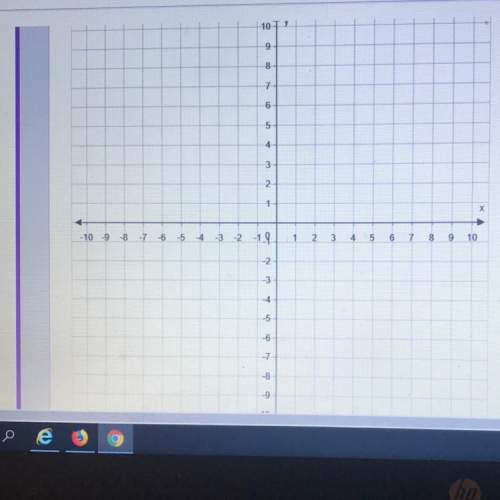
Mathematics, 01.07.2021 02:40 AgentPangolin
Let pn(x) be the Taylor polynomial of order n for the function f(x) =e^x at base point 0. How large should n be chosen to guarantee that |ex−pn(x)| ≤10^−5 for x in the interval [−1,1].

Answers: 1
Another question on Mathematics

Mathematics, 21.06.2019 15:30
Data was collected on myrtle beach for 11 consecutive days. each day the temperature and number of visitors was noted. the scatter plot below represents this data. how many people visited the beach when the temperature was 84 degrees?
Answers: 1

Mathematics, 21.06.2019 23:00
In an equilateral triangle, each angle is represented by 5y+3. what is the value of y? a. 9.7 b. 10.8 c. 11.4 d. 7.2
Answers: 1

Mathematics, 21.06.2019 23:30
Scenario: susan wants to make 2 square flags to sell at a crafts fair. the fabric she wants to buy is 3 meters wide. she doesn't want any fabric left over. what's the least amount of fabric she should buy? question: which equation will susan solve her problem? note: let x represent the length of 1 side of the flag. options: 1) 2x^2 = 4x 2) 8 +2x = 2(4x) 3) 2 * 2 = 4 * 2 4) 4x^2 -2x = 0
Answers: 2

Mathematics, 22.06.2019 02:30
Atrain traveled for 1.5 hours to the first station, stopped for 30 minutes, then traveled for 4 hours to the final station where it stopped for 1 hour. the total distance traveled is a function of time. which graph most accurately represents this scenario? a graph is shown with the x-axis labeled time (in hours) and the y-axis labeled total distance (in miles). the line begins at the origin and moves upward for 1.5 hours. the line then continues upward at a slow rate until 2 hours. from 2 to 6 hours, the line continues quickly upward. from 6 to 7 hours, it moves downward until it touches the x-axis a graph is shown with the axis labeled time (in hours) and the y axis labeled total distance (in miles). a line is shown beginning at the origin. the line moves upward until 1.5 hours, then is a horizontal line until 2 hours. the line moves quickly upward again until 6 hours, and then is horizontal until 7 hours a graph is shown with the axis labeled time (in hours) and the y-axis labeled total distance (in miles). the line begins at the y-axis where y equals 125. it is horizontal until 1.5 hours, then moves downward until 2 hours where it touches the x-axis. the line moves upward until 6 hours and then moves downward until 7 hours where it touches the x-axis a graph is shown with the axis labeled time (in hours) and the y-axis labeled total distance (in miles). the line begins at y equals 125 and is horizontal for 1.5 hours. the line moves downward until 2 hours, then back up until 5.5 hours. the line is horizontal from 5.5 to 7 hours
Answers: 1
You know the right answer?
Let pn(x) be the Taylor polynomial of order n for the function f(x) =e^x at base point 0. How large...
Questions

Medicine, 08.10.2019 00:10


Computers and Technology, 08.10.2019 00:10

Biology, 08.10.2019 00:10


Mathematics, 08.10.2019 00:10




Computers and Technology, 08.10.2019 00:10




Physics, 08.10.2019 00:10










